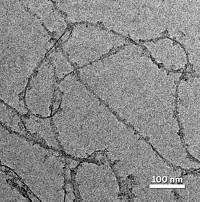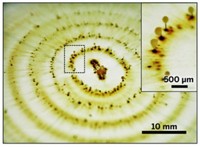Advertisement
Grab your lab coat. Let's get started
Welcome!
Welcome!
Create an account below to get 6 C&EN articles per month, receive newsletters and more - all free.
It seems this is your first time logging in online. Please enter the following information to continue.
As an ACS member you automatically get access to this site. All we need is few more details to create your reading experience.
Not you? Sign in with a different account.
Not you? Sign in with a different account.
ERROR 1
ERROR 1
ERROR 2
ERROR 2
ERROR 2
ERROR 2
ERROR 2
Password and Confirm password must match.
If you have an ACS member number, please enter it here so we can link this account to your membership. (optional)
ERROR 2
ACS values your privacy. By submitting your information, you are gaining access to C&EN and subscribing to our weekly newsletter. We use the information you provide to make your reading experience better, and we will never sell your data to third party members.
Environment
Arsenic holds uranium in check
Analyses show that poisonous element helps prevent uranium migration in the environment
by Mitch Jacoby
January 22, 2018
| A version of this story appeared in
Volume 96, Issue 4
Nearly 90 years have passed since South Terras, a commercial uranium mine in southwestern England, closed up shop. Miners and ore processors no longer come and go, but what about minerals rich in harmful radionuclides: What factors control whether they stay put at the abandoned mine or end up in rivers and groundwater? Scientists have chipped away at that research problem for years, and a new study has uncovered an unexpected environmental helper—arsenic. By using synchrotron-based X-ray methods to analyze soil samples collected at the mine, a team led by Claire L. Corkhill and Neil C. Hyatt of the University of Sheffield found that uranium combined with arsenic to form a highly water-insoluble mineral known as metazeunerite (Cu(UO2)2(AsO4)2·8H2O). The presence of the mineral, which had not been observed previously in sites contaminated with uranium, indicates that arsenic plays an active role in controlling uranium migration in the environment (npj Mater. Degrad.2017, DOI: 10.1038/s41529-017-0019-9). The study also turned up metatorbernite (Cu(UO2)2(PO4)2·8H2O) and suggests that the two minerals form a solid solution. The findings may be used to improve environmental models and strategies for remediating uranium contamination.





Join the conversation
Contact the reporter
Submit a Letter to the Editor for publication
Engage with us on Twitter